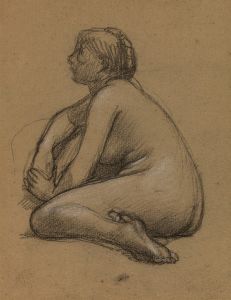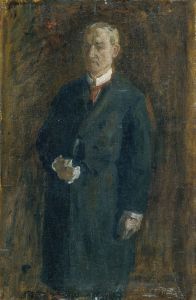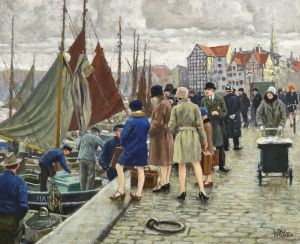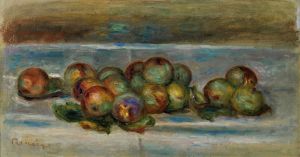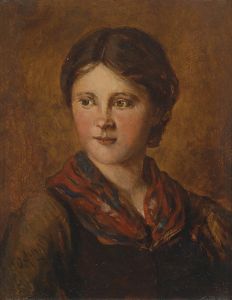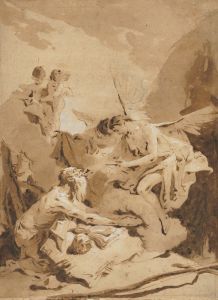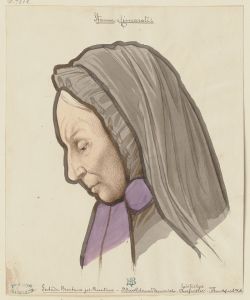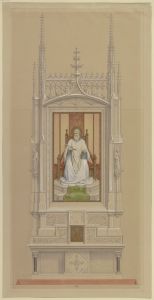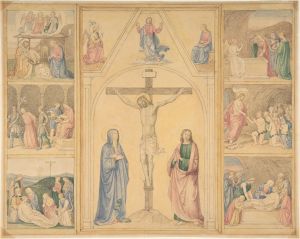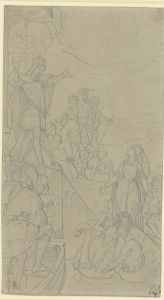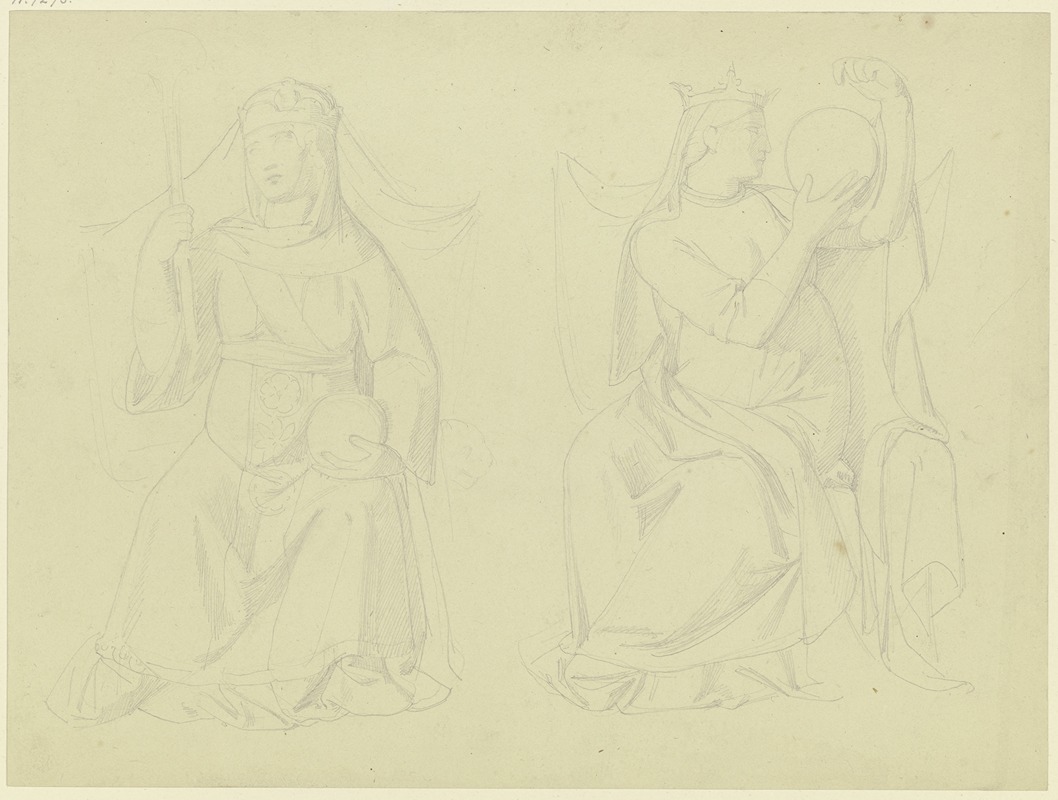
Zwei gekrönte weibliche Figuren
A hand-painted replica of Eduard von Steinle’s masterpiece Zwei gekrönte weibliche Figuren, meticulously crafted by professional artists to capture the true essence of the original. Each piece is created with museum-quality canvas and rare mineral pigments, carefully painted by experienced artists with delicate brushstrokes and rich, layered colors to perfectly recreate the texture of the original artwork. Unlike machine-printed reproductions, this hand-painted version brings the painting to life, infused with the artist’s emotions and skill in every stroke. Whether for personal collection or home decoration, it instantly elevates the artistic atmosphere of any space.
Eduard von Steinle was a notable 19th-century German painter, associated with the Nazarene movement, which sought to revive honesty and spirituality in Christian art. One of his works, "Zwei gekrönte weibliche Figuren" (Two Crowned Female Figures), reflects the artist's dedication to religious and allegorical themes, which were central to his oeuvre.
Steinle was born in Vienna in 1810 and later became a prominent figure in the German Romantic movement. He was deeply influenced by the Nazarene movement, which was characterized by its return to medieval and early Renaissance art forms, emphasizing religious and moral subjects. The Nazarenes sought to counteract what they saw as the frivolity of contemporary art by focusing on spiritual and historical themes.
"Zwei gekrönte weibliche Figuren" is a testament to Steinle's skill in combining religious iconography with a romantic style. The painting features two female figures, both crowned, which suggests a representation of allegorical or religious significance. The crowns indicate a status of nobility or divinity, which is a common motif in religious and allegorical art, symbolizing purity, virtue, or a divine connection.
Steinle's work is known for its meticulous attention to detail and its harmonious composition, both of which are evident in this painting. The figures are likely depicted with serene expressions and graceful postures, typical of Steinle's style, which often imbued his subjects with a sense of calm and dignity. The use of color and light in his paintings often enhances the spiritual and ethereal quality of the subjects, drawing the viewer into a contemplative state.
The painting's themes are consistent with Steinle's broader body of work, which frequently explored Christian iconography and moral allegories. His works often served as visual sermons, intended to inspire and instruct viewers through their depiction of virtuous figures and divine narratives. Steinle's art was not only a reflection of his personal beliefs but also a response to the cultural and religious currents of his time.
Throughout his career, Steinle was involved in several significant projects, including the decoration of the St. Aegidius Church in Münster and the Cologne Cathedral, where he contributed to the revival of religious art in Germany. His works were highly regarded for their spiritual depth and technical precision, earning him a prominent place among the artists of the Nazarene movement.
In summary, "Zwei gekrönte weibliche Figuren" by Eduard von Steinle exemplifies the artist's commitment to religious and allegorical art, characterized by its spiritual themes and meticulous execution. The painting reflects the broader goals of the Nazarene movement, aiming to inspire and elevate the viewer through its depiction of crowned female figures, possibly representing virtues or divine entities. Steinle's legacy as a painter is marked by his ability to convey profound spiritual messages through his art, making him a significant figure in 19th-century German Romanticism.





